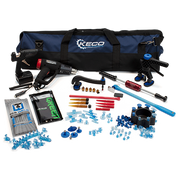
The Power Of Glue Pull Repair & Surface Area
Today’s auto and truck makers use primarily tempered steel and aluminum to make main body panels. They utilize plastic and composites for bumpers and ancillary parts but for most of the large body panels they use steel, tempered steel, and, increasingly, aluminum. Manufacturers are even making some frames from aluminum because of its strength, resistance to corrosion, and lightweight.
To repair a dent years ago, body shop technicians routinely removed the panel and pounded out the dent from the back. This type of repair is less and less of an option today because of unibody construction, more sophisticated manufacturing techniques, and because panels often contain electronics like lights and sensors on the front and wiring and insulation on the back.
Stud Welding
Technicians use stud welding for panel repair in most body shops. This means welding aluminum studs into the panel, attaching a pulling tool to the studs, and pulling the dent out from the front. Stud welding does not involve removing the panel, but it still requires substantial pounding, filling, sculpting, and finish work.
Anyone who has ever stud welded to repair a dent can tell you it can present problems. Aluminum studs often pop off during the pull, which means you may have to re-weld or try to make the pull with the remaining studs, perhaps inviting more damage if that doesn’t work. In addition, when removing the studs after the pull, you can easily tear holes in the metal, giving you more repairs to make. When you are finally done with your pull, you have to remove the studs, skim coat, and finish the area.
Reduced Surface Area Creates Problems
The reason studs sometimes pull out is because they cover too little surface area on the panel. The surface area is not large enough to sustain the force of the pull. As a result, when you pull, you often rip holes in the panel as the studs pull out because there is too little surface area and therefore too little strength in the metal for the pull. How, then, to increase the surface area to pull without welding more studs?
GPR Advantages
With glue pull repair (GPR), you attach a plastic piece, called a tab, to the damaged area. The tab covers much more surface area than a stud so you have more area of the dent to pull with. This allows you to apply more pulling power without fear of additional damage to the panel in the form of holes. In addition, because you do no stud welding, you do not violate the surface of the panel.
GPR provides an efficient, clean way to pull the dent. With its tab-and-adhesive method of pulling, after the adhesive is dry, you attach your pull tool to the tab and pull the dent out. Once you’ve pulled the dent, you simply remove the adhesive, do some minor skim coating and finishing, and you’re through. No studs breaking off, no additional holes to fill as a result.
Another advantage of GPR is that, in addition to avoiding damage to electronics and insulation on the panel, it minimizes damage to the OEM finish and to the e-coat. Although the surface area the tab covers is greater than a stud and therefore better for pulling, the tab and the adhesive used to attach it to the panel leave little or no damage compared to a welded stud. Frequently, after you have pounded down a few high spots and have done some minor filling and finishing, the job is done and you’re free to move on to the next one.
GPR is far less intrusive than stud-weld pulling and gives you more surface area to work with. The result is you have more power to pull, with way less damage to the panel and therefore less filling, priming, and painting. Overall, you expend less effort and time on the pull itself and much less time and effort on the finishing end. That is a combination that is hard to beat.
KECO, the Premier GPR Specialists
GPR began in the early 2000s. But the adhesives and tabs back then were weak so they broke often, and tool systems were not readily available. As a result, technicians only used the “magic” of GPR on lighter pulls and to accent body shop work on large pulls. Since those early years, KECO has been at the forefront of improving these techniques and tools and has taken them to a level that allows body shops to adopt them with ease.
The Basic Principles
The basic GPR technique is simple. After cleaning the surface to prep it, you pull the dent out from the front using an adhered “tab” that you attach to the panel with high-strength, removable adhesive and a pulling tool or device. After you’re done with the pull you may have to knock down some high spots in the same manner as you work today. But aside from some minor filling, priming, and painting, in most cases, you’re done.
Also with GPR, there is no need to maintain separate work areas for aluminum and steel body work in your shop. The preparation, the pull techniques and tools, and the finish work is the same for both metals.
Learning GPR requires not only prepping the surface by cleaning it but, equally as important, making sure the temperature is right—for both the panel and the glue. Techs must also choose the correct tabs to use and the best pulling tool for the job at hand. Fortunately, these skills and choices are easy to acquire and employ. Technicians can learn the basics of glue pull on their own with minimum guidance by watching the information on www.pulltopaint.com.
You can shop the entire assortment of KECO Body Repair Products as well as many of the other premier brands in dent repair at kecotabs.com. To see some products in-use with the power of GPR, KECO’s YouTube channel is updated all the time with new videos. is updated all the time with new videos.


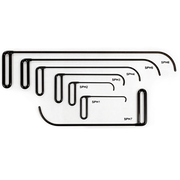
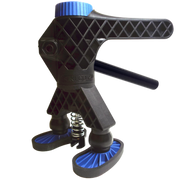
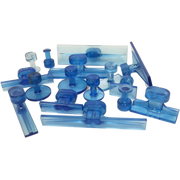
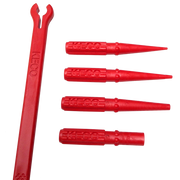
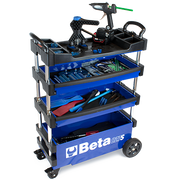
Leave a comment